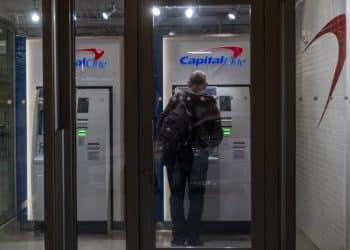It’s Alive! NFC Is Back from the Dead

NFC is back and on the move.
Visa and MasterCard both announced support for host-card emulation (HCE) this week and that means near-field communication (NFC), long thought to be finished in the contactless payments world, is alive and doing quite well, thank you.
HCE was built into the latest version of Android, version 4.4, nicknamed KitKat. HCE allows payment information, typically a card number, to be securely stored in the cloud. This means mobile payments apps can access that information without resorting to the “secure element,” a piece of hardware in the phone containing the information. Apps, now with the payment information ready, can then use NFC to contact the point of sale.
Bypassing the secure element means the dream of paying with one’s phone — at least one’s Android phone — at the point of sale is alive. NFC technology remains hardware-based, but allowing cloud-based payments data removes carriers such as AT&T and Verizon from having a decisive role in the payments process. With their own initiatives such as the ISIS wallet, the carriers were unsurprisingly not supportive of initiatives seeking to access the secure element such as Google Wallet. (ISIS, of course, had no problem getting access to the secure element.)
On Wednesday, Visa and MasterCard said “yes” to HCE. As it happens, they’ve been working on it for some time, perhaps even before Google’s introduction of KitKat last summer. MasterCard piloted the technology with Capital One in the U.S. and Banco Sabadell in Spain, and will issue its specifications for HCE by mid-year, according to a company spokesperson. Visa is slightly ahead in that its specifications are available now, the company announced Wednesday.
Cherian Abraham saluted the fortitude of some industry players in continuing to promote HCE.
“Yesterday’s announcements are a testament to the effort invested in this by SimplyTapp, Google, and a number of major issuers who have each an initiative at varying levels of maturity around cloud hosted credentials,” he said. “The ecosystem had been waiting on the network certification as an inflection point, prior to investing more focus in HCE – and that is just what happened.”
As to the often-asked question of Apple joining Google in incorporating HCE into its operating system, Abraham expressed skepticism about Apple’s enthusiasm for NFC. “Note Visa’s inclusion of non-contactless payment modalities, such as in-app and QR, that allow Apple to consider a different approach to payments at the point-of-sale or online,” he said. “As for whether Apple could go this route really is a cog in a broader device strategy — one that has something to say about NFC. And we don’t know yet if Apple considers [NFC] as the shortest route to being viable in payments.”
Apple has so far shown a preference for Bluetooth, as in its iBeacon technology, but Abraham was unenthusiastic about Bluetooth’s prospects. “I am not sure if Bluetooth is yet a viable contactless method. In the long run, I believe last-mile technologies are not as interesting as overhauling the entire shopping experience.”
This is certainly the area where Apple seems to be headed, according to observers such as Tom Noyes, who notes Apple’s strength in retail and concern with the overall shopping experience, rather than just the payments piece. Regardless of where Apple goes, Android phones appear to be headed for contactless payments by year’s end, and NFC is suddenly has become the toast of the payments community again. Cheers!
Learn more about what’s next in banking at Bank Innovation 2014 on March 3-4 in Seattle. Request an invitation here.











